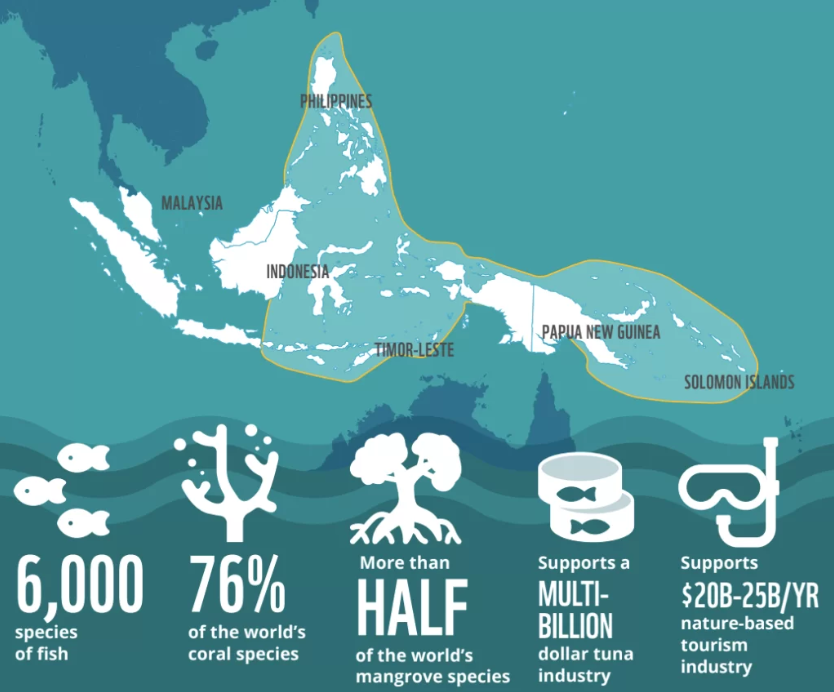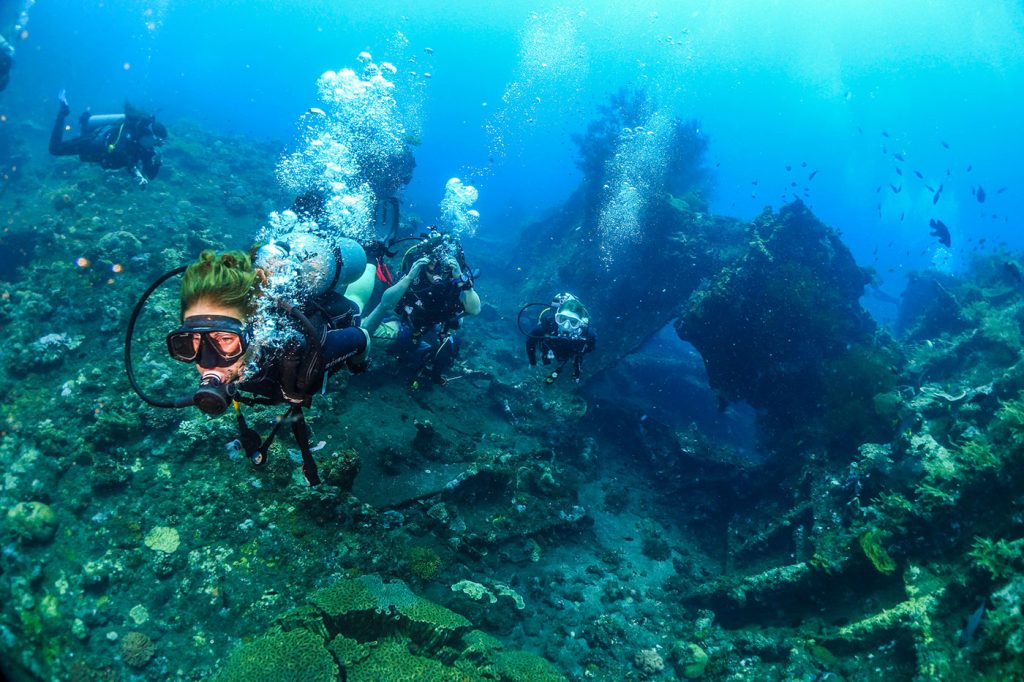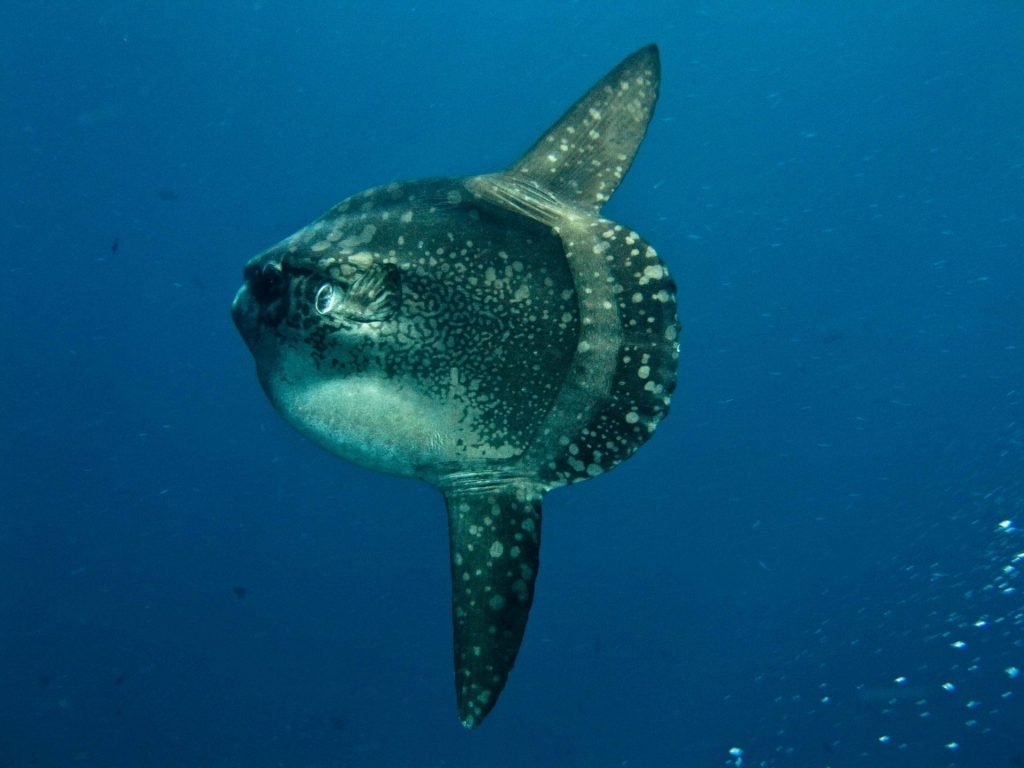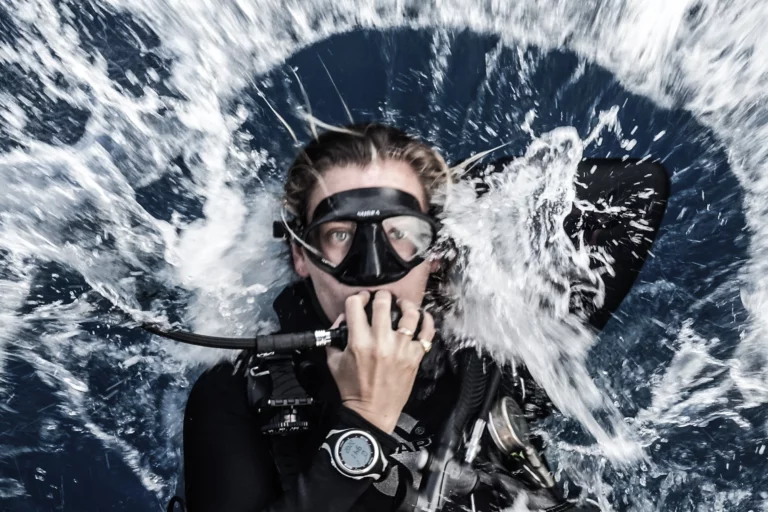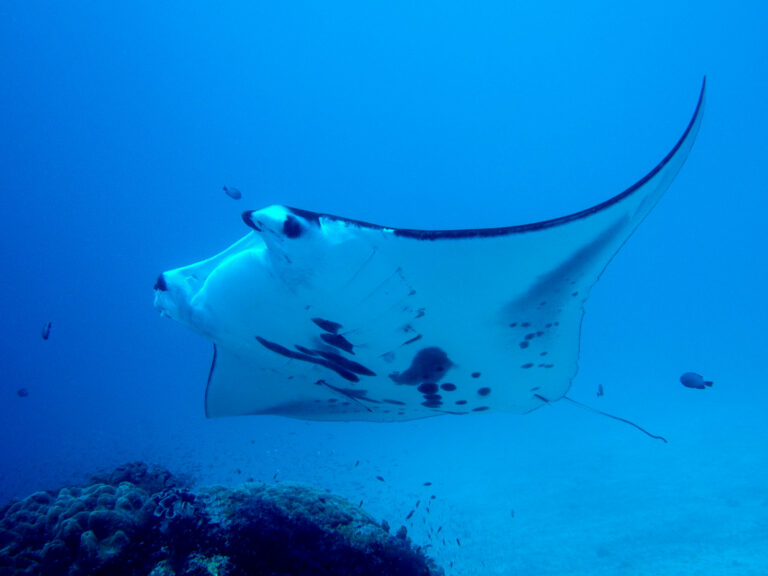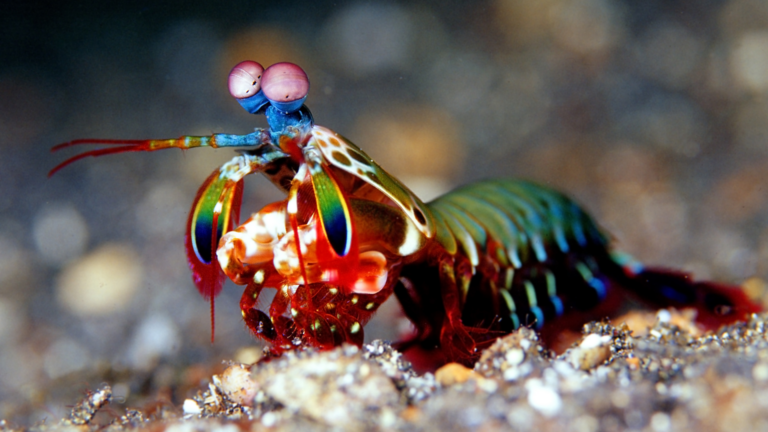Indonesia is an archipelago country that, according to the World Atlas, has 17,508 islands. Indonesia is located on the Pacific Ring of Fire. The Ring of Fire is a 40,000 km long chain of volcanoes and seismically active sites spanning the Pacific Ocean. Yes! Indonesia is a land of active volcanoes and earthquakes. This geological phenomenon not only shapes the terrestrial landscape but also plays a vital role in creating the conditions for the Coral Triangle’s thriving marine ecosystems.
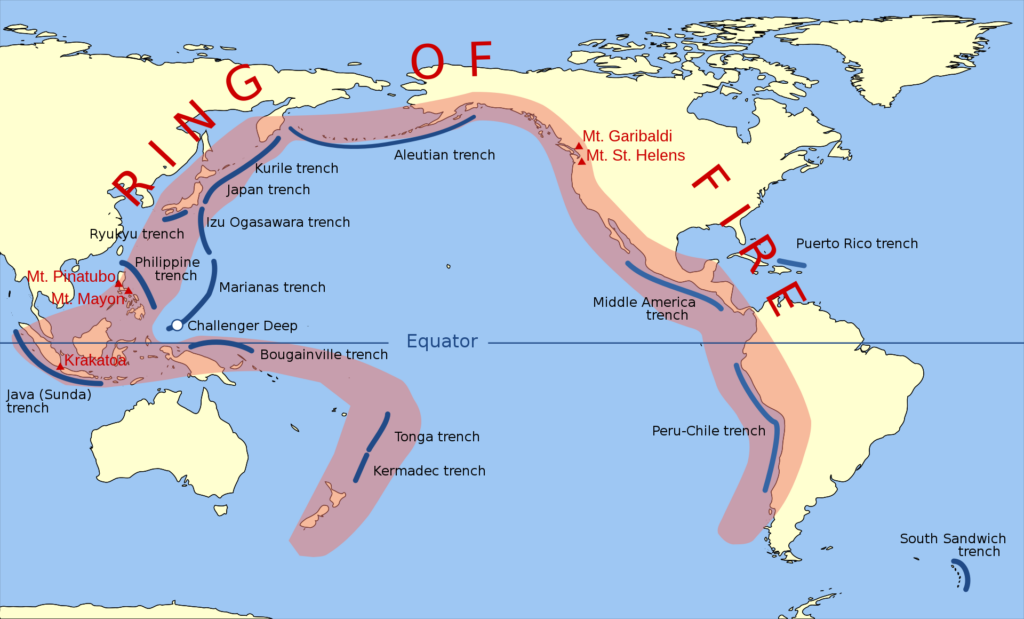
About The Coral Triangle
Most of the Indonesian islands sit in an area called the Coral Triangle. It is a big area that includes Indonesia, the Philippines, Malaysia, Papua New Guinea, the Solomon Islands, and Timor-Leste. This area boasts an incredible range of marine life and vibrant coral reefs. It is a paradise for scuba divers and underwater photographers. Indonesia is at the heart of the Coral Triangle, as you can see on the map below:
The Coral Triangle covers 6 million square kilometers of ocean and has more than 6,000 types of fish, 76% of the world’s coral species, more than half of the world mangrove species, and more than 2.228 reef fish species. It boasts the most abundant hub of marine biodiversity worldwide, sustains the livelihoods of over 120 million individuals, and has some of the best diving destinations on Earth.
Scuba Diving Destinations in Indonesia
Indonesia has diverse marine life and stunning coral reefs and is a dream destination for divers. The Coral Triangle in Indonesia boasts some of the most thrilling underwater ecosystems in the world, making it an exciting and challenging region for scuba divers. Divers can explore underwater volcanic formations, including submerged craters, walls, and unique geological features.
Here are some of the most iconic diving destination in Indonesia… If this list is not enough, get in touch with us, we have many more hidden gems for the most adventurous travelers!
Raja Ampat
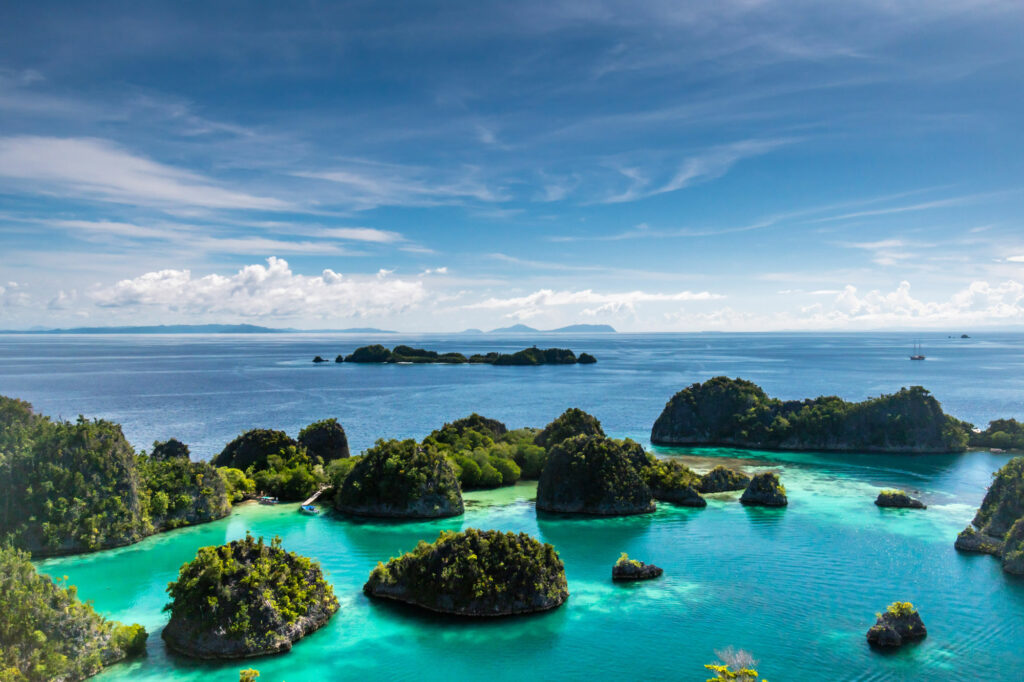
Raja Ampat is known as the “Galapagos of the Sea” because of these beautiful and unique coral reefs. It is home to many different unique species that cannot be found anywhere else in the world. It has been found that 37% of the coral fish species in the world exist in Raja Ampat. Raja Ampat’s exact location in the archipelago is off the northwest tip of Bird’s Head Peninsula. It is part of Indonesia’s Southwest Papua province on the island of Papua New Guinea. This island lies across the Equator and forms part of the Coral Triangle, which contains the richest marine biodiversity on earth. The best time to visit is between October – April on a liveaboard trip. The visibility is at its best, and the water is calm and warm.
Cenderawasih Bay

Credit Image: Calicojack
Looking to swim with Whale Sharks? Yes! Cenderawasih Bay is famous for its friendly whale sharks. The behavior of these gentle giant in Cenderawasih Bay is different. They gather under the fishing platforms and dine on the small fish that escape from the fishing net, or the fisherman throws away the fish to them. The world leading fish scientist, Dr. Gerry Allen, has labeled Cendrawasih Bay as “the Galapagos of Indonesia’s Reefs”. It is because of Cenderawasih Bay is the second-largest marine park after the Savu Sea. The best time to diving in Cenderawasih Bay is from October to April. The weather is calm, with perfect diving conditions, clear visibility, and less rainfall.
Sumbawa
If you are looking for whale shark encounters, the Saleh Bay in Sumbawa also hosts a colony of over 300 individuals. While Sumbawa is just an hour away from Bali by plane, it is still a pretty untouched place with many dive sites still to be discovered. So, if you are up for an original adventure off the beaten path, Sumbawa might be a good option for you!
Komodo National Park
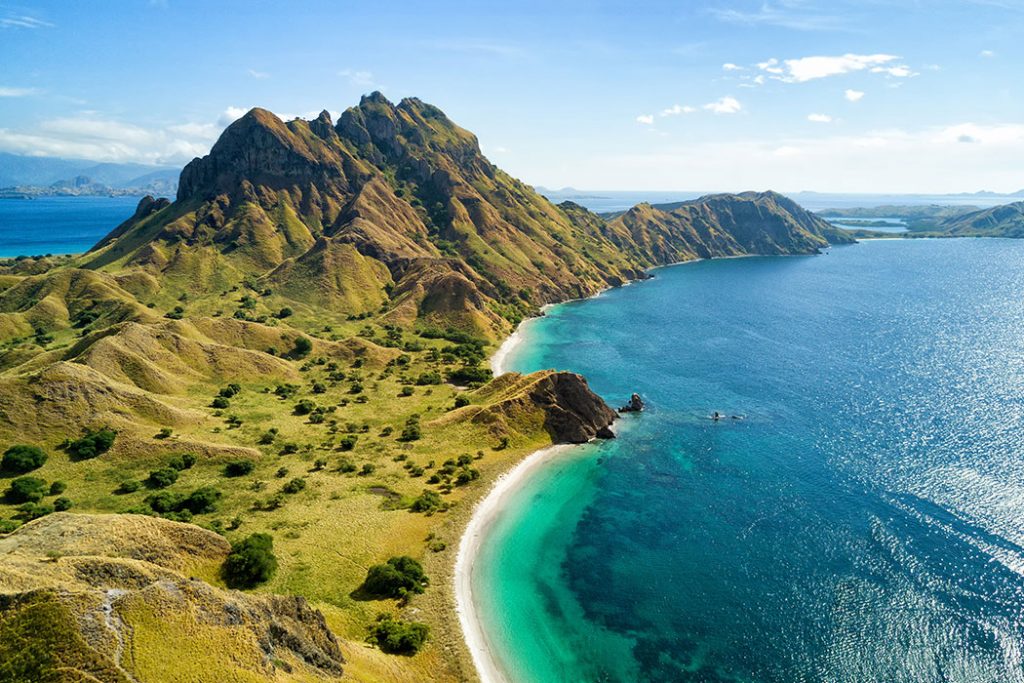
It’s well known for its home for Komodo Dragon, the largest lizard on earth. Discover the beauty of the underwater world in Komodo National Park. Encounter the majestic manta rays and a variety of macro critters. The best time to visit Komodo Island is April to December. The weather is nice and pleasant.
Wakatobi National Pak
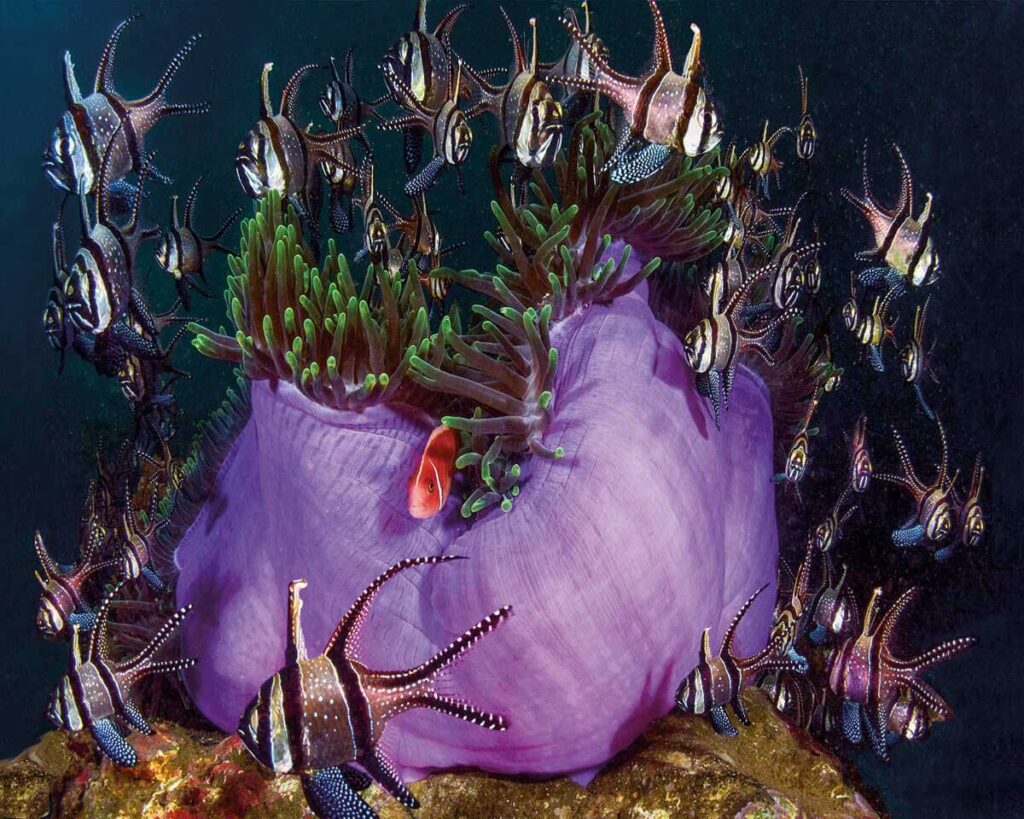
Credit Image: Alan J Powderham
Wakatobi stands for Wangi-Wangi, Kaledupa, Tomia, and Binongko. These are the names of the primary islands. Wakatobi offers an array of diving opportunities. Exploring Wakatobi means diving into sites characterized by coral wall formations, underwater caves, vibrant reefs, and rich critter life. The best time to visit Wakatobi is between March to December. The water is warm between 26-30 degrees Celsius.
Lembeh Strait
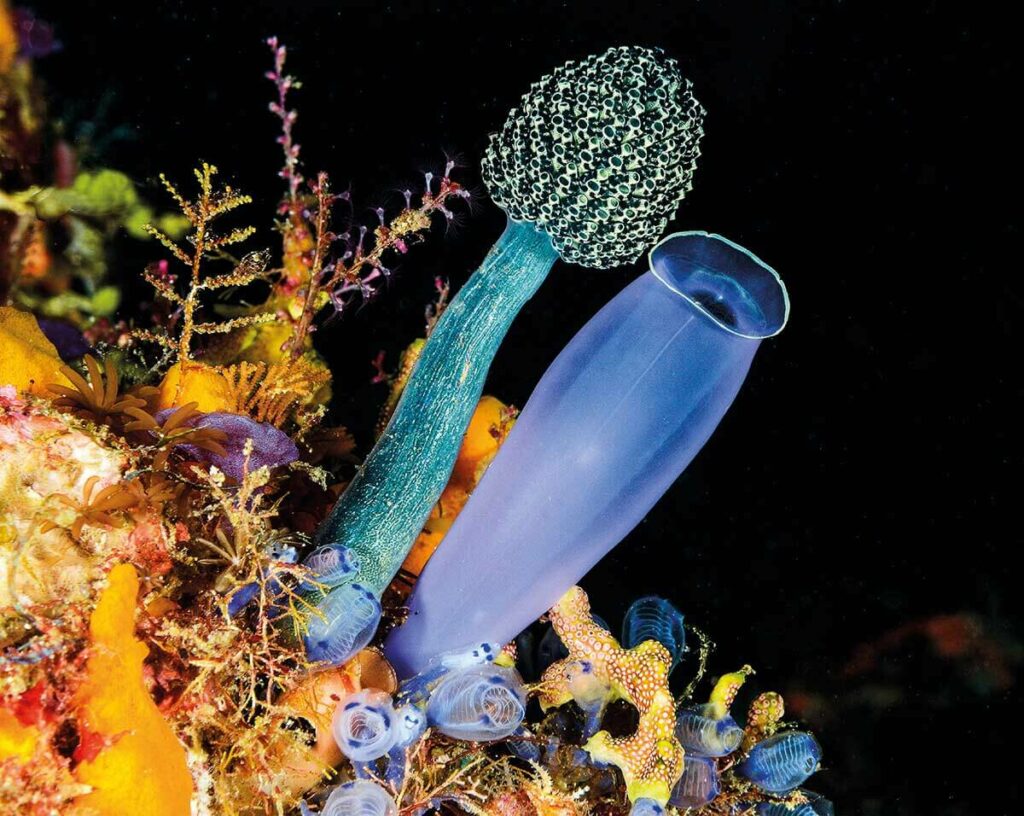
Credit Image: Alan J Powderham
Lembeh Strait is famous as the best diving spot in the world for exotic critter diving, macro diving, or muck diving. The underwater topography is incredibly impressive, and there is a tremendous variety of marine life. It has soft and hard coral gardens, walls, and a pinnacle. Lembeh Strait is the enigmatic plain black sand site that has earned the region its fame. Thanks to their abundance of peculiar and exquisite underwater wonders. The best time for diving here is between September to October. The diving season actually runs year-round, it depends on your preferences. The warmest temperature is around 28-29°C from October to March. The lowest temperature is 25-26°C, around July and August.
Bali
Bali is without a doubt the most popular destination in Indonesia. The Island of the Gods offers some amazing diving for divers of all level. It is also a great place to learn to dive or to improve your skills.
The most famous dive sites of the island are in the Tulamben and Amed area. There you will explore beautiful coral reefs and explore the world-famous USAT Liberty wreck. Macro and muck diving enthusiast can hunt rare critters for days.
Just one hour South of Tulamben, the towns of Padang Bai and Candidasa also offer beautiful dive sites where reef shark encounters are pretty common. In the right season (from June to October), lucky divers can also spot Mola Mola.
Just a few kilometers east of Bali, are the islands of Nusa Penida and Nusa Lembongan. This area is famous for its colony of reef mantas hanging around a cleaning station all year-round. But the reefs around these islands are huge and teeming with life.
From May to October, just like around Padang Bai, sightings of Mola Mola are quite frequent as these mysterious giants get closer to the surface due to the colder water temperature.
Another amazing diving area in Bali is in the north-western part of the island. Pemuteran and the Menjangan island are less known but offer some incredible diving. From muck dives to crystal clear drift dives, the area will for sure put a smile on every diver’s face.
Banda Sea
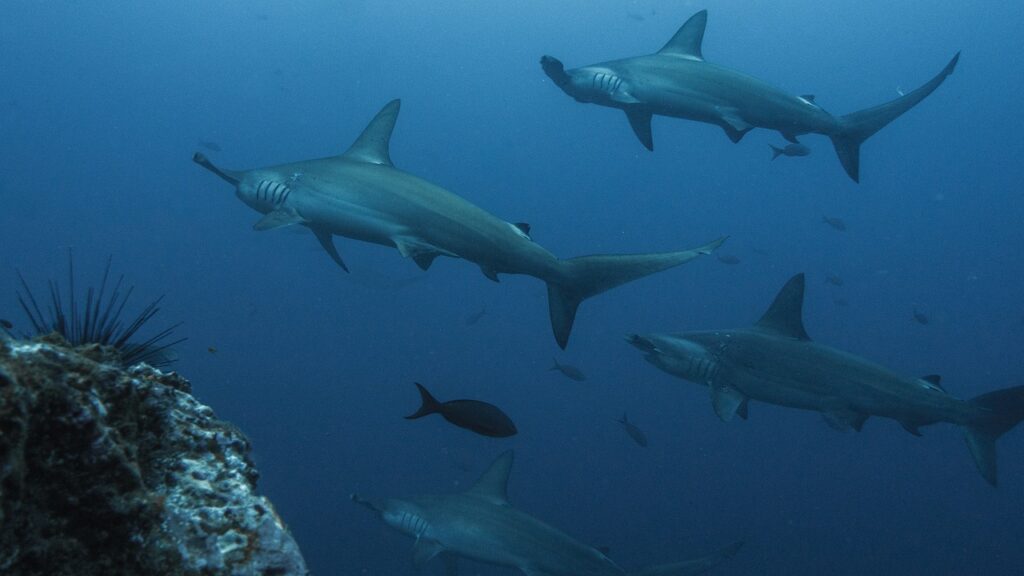
The Banda Sea is part of the Coral Triangle. It is known for its remote and pristine dive sites in Indonesia. It has one of the most exciting diving sites where you can encounter schooling hammerhead sharks. These gentle giants create unforgettable moments for divers. This moment happens twice a year only, between March to April and September to November.
Forgotten Islands
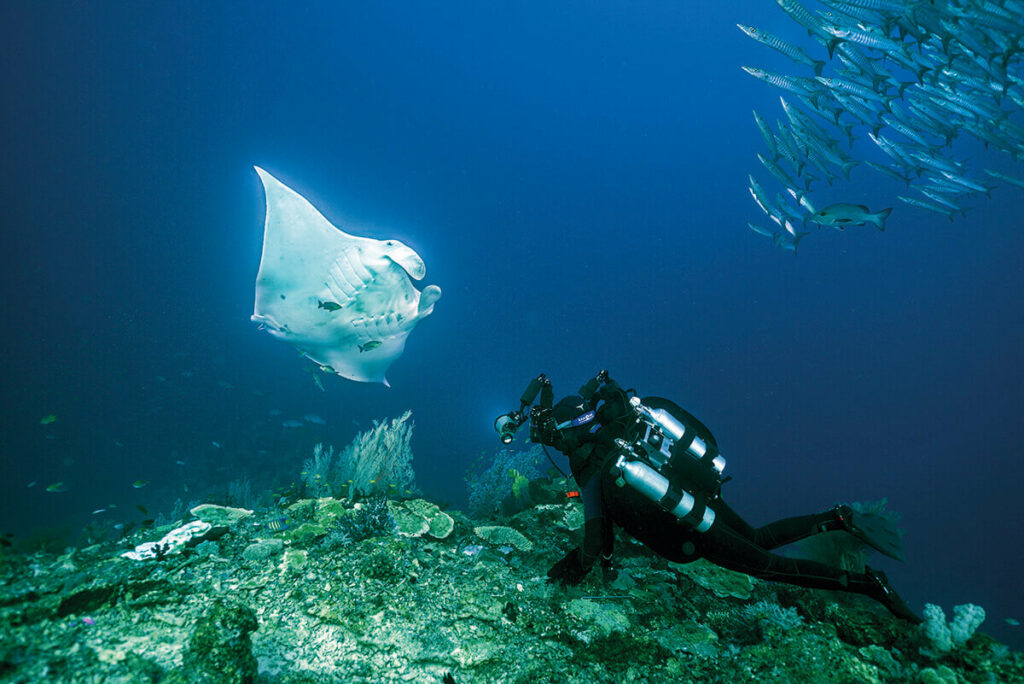
Credit Image: Alan J Powderham
The forgotten islands are a 600-mile-long archipelago nestled between the Banda and Arafura seas. These islands offer some of Indonesia’s most remote diving, even by Indonesian standard. The archipelago stretches from Alor to Ambon, making them best explored via liveaboard. The journey is undoubtedly worthwhile, as the diving experience here is truly magnificent. Prepare to be amazed by dramatic walls adorned with sea fans, sponges, and soft corals, as well as captivating seamounts teeming with a variety of marine life, and a chance to see big creatures like reef sharks, hammerheads, and rays. The best time to visit is September to November.
Isn’t it exciting! Scuba diving in the Coral Triangle area is one of a lifetime journey through some of the world’s most captivating underwater landscapes. From the vibrant reefs of Wakatobi to the biodiversity of Raja Ampat and the remote beauty of the Banda Sea, this region offers a diverse range of experiences for underwater enthusiasts.
Are you ready to embark on a liveaboard adventure or a dive safari in Indonesia? Check out our liveaboard options and contact us now to make your underwater adventure dreams a reality!

